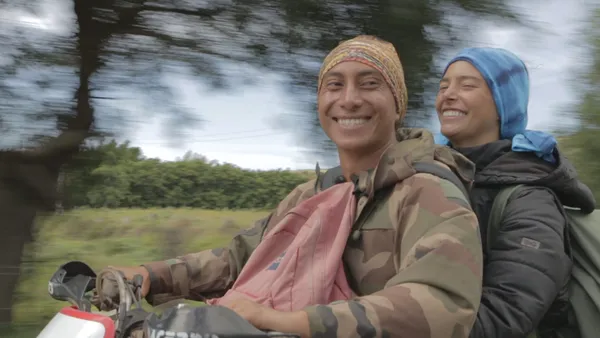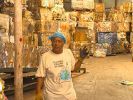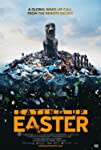Eye For Film >> Movies >> Eating Up Easter (2018) Film Review
Eating Up Easter
Reviewed by: Jennie Kermode

For decades before a real understanding of the fragility of the planetary ecosystem dawned on most people, the story of Rapa Nui - named Easter Island by its colonisers - has been used as an example of environmental folly. Legend has it that the arrival of Dutchman Jacob Roggeveen's ship in 1722 was greeted by desperate pleas to trade for wood, without which canoes could not be made and supplies from other islands could not be reached. "What were they thinking when they cut down the last tree?" Westerners ask. According to one of the locals interviewed in this film, they very quickly got to thinking that they could replicate many of the processes in which they had used wood with other plants, and they went about doing so with great ingenuity - not quite the hopeless cases that foreigners liked to imagine.
Today, Rapa Nui faces a different problem. It's difficult to make a living on a remote island with poor soil, so the islanders depend on their moai - their giant, mysterious ancestral statues - to bring in tourist dollars. In 1994 they collaborated in the making of a Hollywood film (starring Jason Scott Lee) in a successful bid to increase the number of visitors. (In a brief aside, this documentary reveals that a local anthropologist recorded the making of the film, which nobody living there took remotely seriously.) The problem, however, is that people bring things with them to the island but don't take their rubbish away with them again. We tour a warehouse staked with one ton compact blocks of crushed cans, and that's just the tip of the iceberg. Ecologist Mama Piru strives to persuade passing ships to carry the rubbish away to lands where it can be recycled or disposed of appropriately, but it's difficult to keep up with the influx.

Rapa Nui's situation is compounded by the same factor that led to it becoming inhabited in the first place, remote though it is - it's situated at a confluence of currents that bring everything floating in the nearby seas to its shores. Whilst many South Sea islands struggle with pollution and waste which largely originates elsewhere, here the problem is acute. In order to tackle it, Mama Piru stresses, one much first encourage people to take pride in their island. Like indigenous peoples in many parts of the world they have seen much of their traditional way of life destroyed to be replaced with jobs that feel meaningless, a lack of real opportunities and easily available alcohol. Rates of addiction are high, life expectancy short. Other contributors argue that the most effective place to start bringing about change is with the young. It starts with little things like encouraging them to speak their own language, still alive in their grandparents' generation but not among their parents. To save Rapa Nui, they need to believe that it's worth something, that they can invest their energy in it rather than just dreaming of getting out.
Made by local filmmaker Sergio Mata'u Rapu and addressed to the infant daughter for whom he hopes to build a better future, this is an example of the growing tendency for indigenous people to regain control over their own cultural narratives and set about trying to communicate them to the wider world. It's not a beginner's guide to the island and barely touches on the prehistory that has made it famous, but it's a portrait of real life there and an exploration of how today's environmental challenges might be met - something with far wider relevance. Rapa Nui can serve as more than a misrepresented example of folly. Through work like this, it might help to illuminate a positive way forward for us all.
Reviewed on: 28 Jun 2020

















